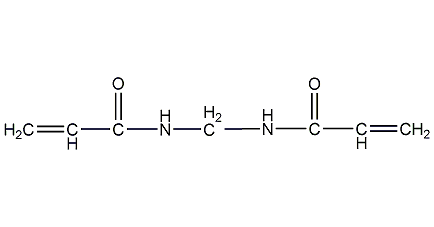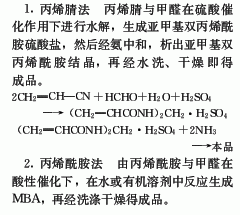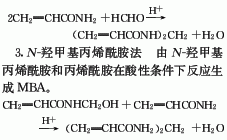
Structural formula
| Business number | 030W |
|---|---|
| Molecular formula | C7H10N2O2 |
| Molecular weight | 154.17 |
| label |
N,N-methylenebisacrylamide, N,N-methylenebisacrylamide, methylene bisacrylamide, N,N’-methylenebis(2-acrylamide), N,N’-Methylenebisacrylamide, Genetic engineering research reagents |
Numbering system
CAS number:110-26-9
MDL number:MFCD00008625
EINECS number:203-750-9
RTECS number:AS3678000
BRN number:None
PubChem number:24848761
Physical property data
1. Appearance: White or light yellow powdery crystal
2. Density (g/mL, 20℃): 1.235
3. Relative vapor density (g/mL , air=1): 5.31
4. Melting point (ºC): >300
5. Boiling point (ºC, normal pressure): Undetermined
6 . Boiling point (ºC, kPa): Not determined
7. Refractive index: Undetermined
8. Flash point (ºC): 221
9. Ratio Optical rotation (º): Undetermined
10. Autoignition point or ignition temperature (ºC): Undetermined
11. Vapor pressure (mmHg, 25ºC): Undetermined
p>
12. Saturated vapor pressure (kPa, ºC): Undetermined
13. Heat of combustion (KJ/mol): Undetermined
14. Critical temperature (ºC ): Undetermined
15. Critical pressure (KPa): Undetermined
16. Log value of oil-water (octanol/water) partition coefficient: Undetermined
17. Explosion upper limit (%, V/V): Undetermined
18. Explosion lower limit (%, V/V): Undetermined
19. Solubility: soluble It is soluble in water and also soluble in organic solvents such as ethanol and acetone.
Toxicological data
1. Acute toxicity: Rat oral LD5O: 390mg/kg
Rat inhalation LC: >41ppm/6H
Mouse oral LD5O: 380mg/kg
Mouse inhalation LC: >41ppm/6H
Guinea pig inhalation LC: >41ppm/6H
2. Other multi-dose data: Mouse oral TDLO: 3206mg/kg/8W-I
3. Reproductive toxicity: Oral TDLO to male mice before mating: 3208mg/kg, duration 16 days
Oral to female mice after fertilization TDLO: 360mg/kg, duration 6-17 days
Oral TDLO before mating in male mice: 50mg/kg, duration 1 day
Intraperitoneal TDLO in male mice before mating : 225mg/kg, duration 1 day
4. Mutagenicity: Salmonella mutation: 1mg/plate
Drosophila sex chromosome deletion and non-disjunction: 600ppm
Mouse dominant lethal test: 225mg/kg
Mouse heritable translocation test: 450mg/kg/5D
Ecological data
This substance is harmful to water bodies. Do not let this product come into contact with groundwater, waterways and sewage treatment systems.
Molecular structure data
1. Molar refractive index: 41.71
2. Molar volume (cm3/mol): 146.1
3. Isotonic specific volume (90.2K ): 354.6
4. Surface tension (dyne/cm): 34.7
5. Polarizability (10-24cm3): 16.32
Compute chemical data
1. Reference value for hydrophobic parameter calculation (XlogP): 0.1
2. Number of hydrogen bond donors: 2
3. Number of hydrogen bond acceptors: 2
4. Number of rotatable chemical bonds: 4
5. Number of tautomers: 3
6. Topological molecule polar surface area 58.2
7. Number of heavy atoms: 11
8. Surface charge: 0
9. Complexity: 167
10. Number of isotope atoms: 0
11. Determine the number of atomic stereocenters: 0
12. Uncertain number of atomic stereocenters: 0
13. Determine the number of chemical bond stereocenters: 0
14. Number of uncertain chemical bond stereocenters: 0
15. Number of covalent bond units: 1
Properties and stability
1. It does not decompose under normal temperature and pressure. Avoid contact with oxides, light, acids, reducing agents, alkali and heat. May polymerize after exposure to light.
2.This product has certain toxicity and may cause irritation to eyes, skin and mucous membranes. Operators should wear protective equipment to avoid direct contact with the human body.
Storage method
1. Store in a cool, dry place. Keep away from sources of fire and ensure good ventilation in the workspace. Store in a dark place and never store with oxidizing and acidic substances. Store away from oxidants, strong alkali, heat and direct sunlight.
2. This product is packed in plastic barrels lined with plastic bags, 10kg per barrel. Store in a cool and dry place. Keep away from light and heat. Store and transport according to regulations on toxic substances.
Synthesis method


Purpose
It can be used as a water-blocking agent in oil field drilling operations and building grouting operations, and can also be used as a cross-linking agent in the synthesis of acrylic resins and adhesives. It is used as an important material for separating amino acids and an important raw material for photosensitive nylon or photosensitive plastics. It is used as raw material for photosensitive nylon and photosensitive plastics, building grouting materials, and also used in photography, printing, plate making, etc.
It is used as a water-blocking grouting material; it can also be used as a cross-linking agent. It also has important applications in photosensitive materials, water-absorbing materials, optical cable coatings, biotechnology, etc.

 微信扫一扫打赏
微信扫一扫打赏

